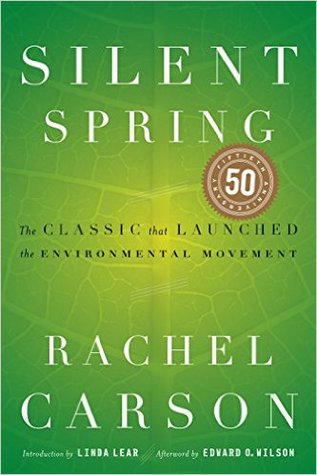More on this book
Community
Kindle Notes & Highlights
In postwar America, science was god, and science was male. Carson was an outsider who had never been part of the scientific establishment, first because she was a woman but also because her chosen field, biology, was held in low esteem in the nuclear age. Her career path was nontraditional; she had no academic affiliation, no institutional voice. She deliberately wrote for the public rather than for a narrow scientific audience. For anyone else, such independence would have been an enormous detriment. But by the time Silent Spring was published, Carson’s outsider status had become a distinct
...more
Carson questioned the moral right of government to leave its citizens unprotected from substances they could neither physically avoid nor publicly question. Such callous arrogance could end only in the destruction of the living world.
It was clear to the industry that Rachel Carson was a hysterical woman whose alarming view of the future could be ignored or, if necessary, suppressed. She was a “bird and bunny lover,” a woman who kept cats and was therefore clearly suspect. She was a romantic “spinster” who was simply overwrought about genetics. In short, Carson was a woman out of control. She had overstepped the bounds of her gender and her science. But just in case her claims did gain an audience, the industry spent a quarter of a million dollars to discredit her research and malign her character.
While Carson knew that one book could not alter the dynamic of the capitalist system, an environmental movement grew from her challenge, led by a public that demanded that science and government be held accountable. Carson remains an example of what one committed individual can do to change the direction of society.
“It seems reasonable to believe,” she wrote, “that the more clearly we can focus our attention on the wonders and realities of the universe about us, the less taste we shall have for the destruction of our race. Wonder and humility are wholesome emotions, and they do not exist side by side with a lust for destruction.”
Given time—time not in years but in millennia—life adjusts, and a balance has been reached. For time is the essential ingredient; but in the modern world there is no time.
The chemicals to which life is asked to make its adjustment are no longer merely the calcium and silica and copper and all the rest of the minerals washed out of the rocks and carried in rivers to the sea; they are the synthetic creations of man’s inventive mind, brewed in his laboratories, and having no counterparts in nature. To adjust to these chemicals would require time on the scale that is nature’s; it would require not merely the years of a man’s life but the life of generations. And even this, were it by some miracle possible, would be futile, for the new chemicals come from our
...more
All this has been risked—for what? Future historians may well be amazed by our distorted sense of proportion. How could intelligent beings seek to control a few unwanted species by a method that contaminated the entire environment and brought the threat of disease and death even to their own kind? Yet this is precisely what we have done. We have done it, moreover, for reasons that collapse the moment we examine them.
For here the natural landscape is eloquent of the interplay of forces that have created it. It is spread before us like the pages of an open book in which we can read why the land is what it is, and why we should preserve its integrity.
Nature herself has met many of the problems that now beset us, and she has usually solved them in her own successful way. Where man has been intelligent enough to observe and to emulate Nature he, too, is often rewarded with success.
As man proceeds toward his announced goal of the conquest of nature, he has written a depressing record of destruction, directed not only against the earth he inhabits but against the life that shares it with him. The history of the recent centuries has its black passages—the slaughter of the buffalo on the western plains, the massacre of the shorebirds by the market gunners, the near-extermination of the egrets for their plumage. Now, to these and others like them, we are adding a new chapter and a new kind of havoc—the direct killing of birds, mammals, fishes, and indeed practically every
...more
“We all live under the haunting fear that something may corrupt the environment to the point where man joins the dinosaurs as an obsolete form of life,” says Dr. David Price of the United States Public Health Service. “And what makes these thoughts all the more disturbing is the knowledge that our fate could perhaps be sealed twenty or more years before the development of symptoms.”
Life is a miracle beyond our comprehension, and we should reverence it even where we have to struggle against it. . . .


